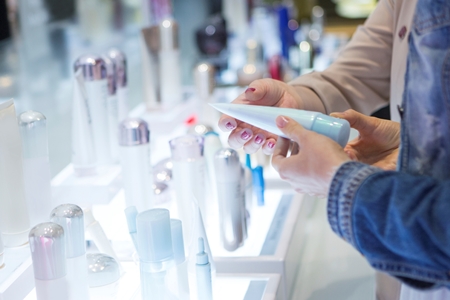Gerard Manion offers practical tips for retail selling at your very best.
Over the past ten years, the beauty industry has been reshaped by incredible advancements in the science and technology of new products. This has led to an explosion in new categories and brands and an ever increasing investment into marketing to attract and maintain customer interest and loyalty.
Customers have also changed dramatically. Today they have less time to shop but thanks to the internet and social media, know more about beauty brands and active ingredients than ever before.
As a result customers expect more from beauty therapists, in terms of knowledge, advice and service. If staff don’t deliver more then they can’t effectively create an experience with the customer that is consistent, memorable and worth coming back for time and time again.
The ‘romance’ that is so carefully crafted in the brand packaging, merchandising and advertising is lost if the therapist is not effectively trained to keep the romance flowing through to the cash register.
Customer service in the beauty industry is arguably the most difficult and rewarding to deliver versus other retail category because the beauty advisor is dealing with the most fragile of any customer’s emotions — their self-esteem and sense of worth.
It must be handled carefully as it can be easily broken as much as it can be elevated. To do this the advisor must, listen, understand, empathise and support the customer.
Here are six practical steps to successful beauty retail selling:
1. Look and be the part
Your customer will make a judgment about you before you approach them; based entirely on your personal presentation and grooming. You have to reflect the benefits of the solutions that you are recommending.
Your body language also has a major impact on how you will be perceived by a customer. Your pose or posture should express confidence, friendliness, and openness.
2. Listen and discover
The reason someone buys a product will not always match your assumption of why they need it.
By simply asking the right questions and listening intently to fully understand the answers you will be able to discover a more practical and tailored solution.
But make sure you give the customer a sense of control as they want to feel their needs and input has had an influence on the recommended outcome.
 3. Know and love your product
3. Know and love your product
The more you know about the products you use or the beauty treatments you offer the more confident you will find yourself being in naturally talking about them.
If someone asks you what’s new, what’s cool or what’s popular make sure you know and understand how the active ingredients get the results.
To be successful in the beauty business you need to be passionate about it and show your clients that you ‘love’ your products. This will build personal confidence, presence and credibility in eyes of the client.
4. Share the love
Enthusiasm is contagious and passion shows through your body language and speech. When selling retail beauty your passion will get you most of the way to the finish line, product knowledge and rapport will close the sale.
Building rapport with a customer is key to becoming a trusted advisor. Rapport is that thing you get with people when you just get on with. You share values and empathies.
Mirroring body language, using words the customer uses, loudness and speed of the way you talk all help to develop rapport.
5. Give solutions
If you take a consultative approach to your customers by listening and asking the right discovery questions, you will be seen as the trusted advisor who educates customers about solutions rather than trying to sell them products.
Combined with your product knowledge and passion, the consultative solutions approach will see the products sell themselves.
6. Ask for the order
Actually asking for the order is the one step that many beauty advisers forget, or are afraid, to make.
If you have spent time creating a relationship with the customer, providing the right advice and building rapport, then asking for the order is easy. Remember if you do not provide the client with a way to recreate the fabulous look or feel you just gave them, then you are doing them a dis-service.
 Selling them ongoing maintenance is doing them a favour.
Selling them ongoing maintenance is doing them a favour.
Gerard Manion is Director of PeoplePlan and co-author of ‘Retail is a University’, peopleplan.com.au




